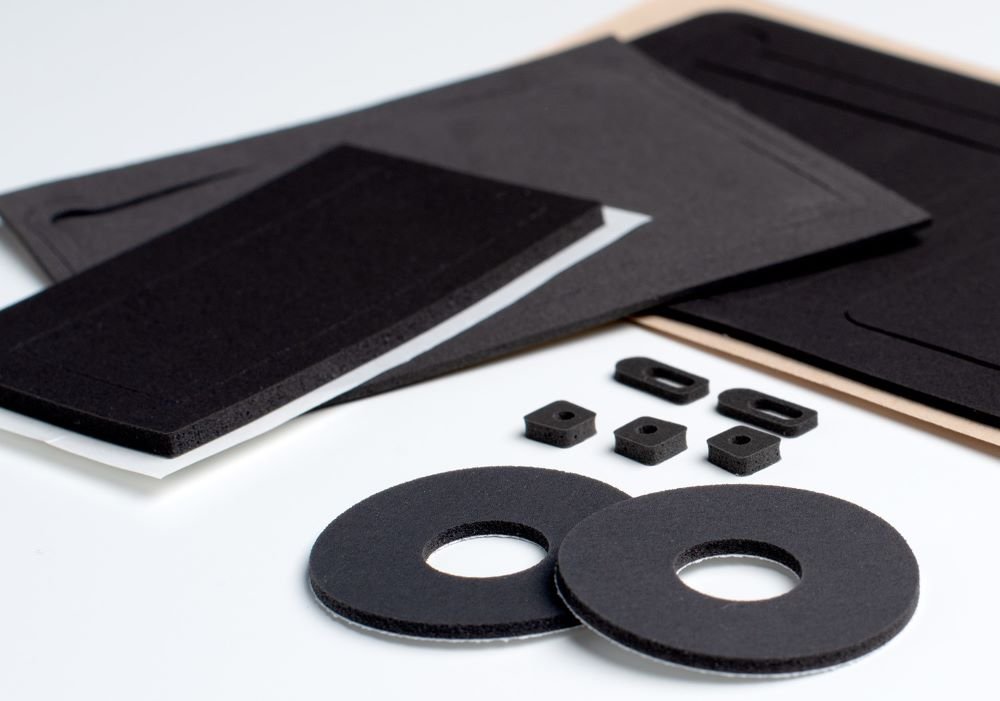The Differences Between Low Density and High-Density Polyurethane Foam
With multiple different types, classifications, and categorizations, foam is an incredibly diverse material, Hundreds of types are available, and this is all because of the unique properties they possess. One small change to the chemical composition of a piece of foam will drastically alter its structure, use, resistance, and so much more. You can write books on the differences between foam materials, but for someone simply trying to choose a foam for any given application, it becomes necessary to break down foams into more simple categories.
Two of those categories are high-density and low-density foam. What’s the difference between them? How does foam density impact performance? Find out how to use high- and low-density polyurethane foams in your applications.
What is Foam Density?
Foam density refers to the weight of the material per unit volume. It is the degree of compactness of the foam, or how much space it takes up (volume) in relation to its mass. Smaller, denser pieces of foam can be heavier than larger, less dense pieces of foam.
There are two factors that can influence foam density while it’s being manufactured:
Blowing agents: generate gas bubbles to expand the foam, creating a specific cellular structure from a liquid plastic resin. They consist of organic or inorganic compounds that create a reaction during the manufacturing process. This reaction transforms liquids into a gas, which expands within the piece of foam and gives it a lower density. Different blowing agents have varying expansion capabilities and chemical compositions, which can result in differences in foam structure and performance characteristics.
Chemical additives: other additives like foam cell stabilizers, crosslinking agents, and fillers and extenders can alter the density and cell structure of the foam.
Foam Density and its Cell Structure
Low density foams generally have larger, more open cell structures, while higher density foams generally have smaller, more compact cell structures. But this does not mean that all high-density foams are closed cell, nor does it automatically mean that low density foams are inherently open cell.
Note on open cell vs closed cell: open cell foams use inflating agents to create interlocking porous openings that form the foam structure. The cell structure of the foam is left “open,” allowing for gases and liquids to generally be able to pass through them. This is why open cell foams are generally used for filtration purposes. Closed cell foam has a cell structure that is “closed.” The cells are trapped gas bubbles that do not allow liquids or gases to pass through, which makes them ideal gasketing foams. Keep in mind that some open cell foams can also be used for gasketing applications.
Foam density is independent of foam firmness: one myth about foam density is that it's tied to firmness. However, high density foams can be very soft, and low-density foams can be made very firm.
When to Use Higher Density Polyurethane Foam
High-density polyurethane foam (from about 10-20lbs/ft2) is generally used in gasketing and sealing (they meet (UL 50 and UL508) and applications that require vibration isolation, sound damping, or protection for heavy objects. Because the materials can be fabricated into multiple thicknesses, they are also ideal for filling gaps in products or applications.
High density polyurethane foam offers several advantages:
High durability and resilience
Higher elongation and tensile/tear strength
Support for heavier objects: high shock and impact absorption
Less compression set: as the density of this foam increases, the compression set and height loss decreases
Vibration isolation: the cell structure and makeup of the foam makes it ideal for absorbing and dampening sound and vibrations
Thermal conductivity with a good service temperature range (-40° - 194°)
Water resistance: denser foams generally have a closed-cell structure that makes them resistant to water penetration
Good chemical and ozone resistance
Low fogging (passes SAE J-1765)
The best known commercially available brands of high-density urethane foam are Poron® and Isoloss™ from the 3M™ Aero business. Both brands provide log rolls in a wide range of thicknesses, densities, and compression deflection values. These foams are often laminated with pressure sensitive tapes and then slit into rolls or die-cut into parts.
When to Use Lower Density Polyurethane Foam
Low density polyurethane foam (from about 1 to 6 lbs./ft2) is an economical open-cell foam that is generally used for filtration applications and select gasketing applications (i.e., door gaskets). The material’s primary advantage, when compared to high density foams, is its excellent compression and memory. The foam will rebound after being compressed, making it ideal for applications that experience a periodic cycle of differing amounts of compression over time.
Low density polyurethane foam offers several other advantages:
Thermal insulation: less dense foams offer higher insulating properties
The ability to be used to filter air and water
A higher cost efficiency
Excellent resilience and bounce back
Adequate sound absorption and vibration dampening
Good cushioning capabilities
Good thermal insulation and flame resistance
Thermal conductivity with a good service temperature range (-40° - 194°)
Produced in buns and long boards, these products typically will need to be skived to the specific application thickness. Once skived to thickness, these foams are also often laminated with pressure sensitive tapes and then slit into rolls or die-cut into parts.
Custom Fabrication and PSA Tapes
At Engineered Materials, we use both high-density and low-density polyurethane foams as industrial gasket materials. We’ll help you make the right choice for your application, then fabricate the materials to any size and shape you require, including custom die-cut pieces and parts. Our gasket and filtration foams can even be combined with pressure sensitive adhesives (PSA) that can adhere to nearly any substrate. Double-sided PSA options are also available, which allows you to easily bond dissimilar substrates while maintaining a tight gasket seal.


